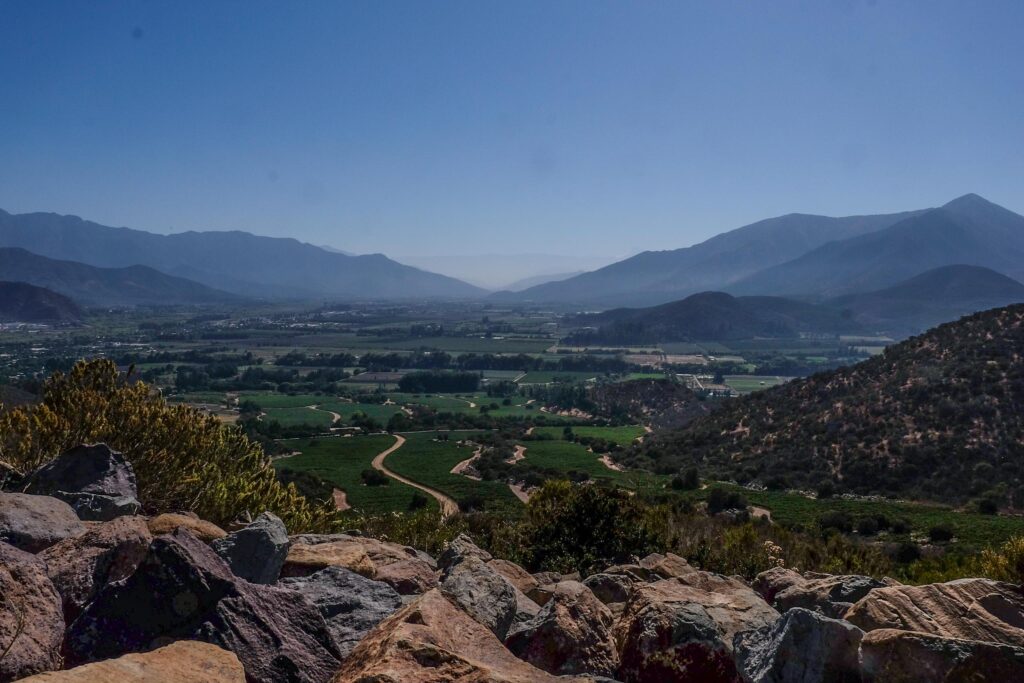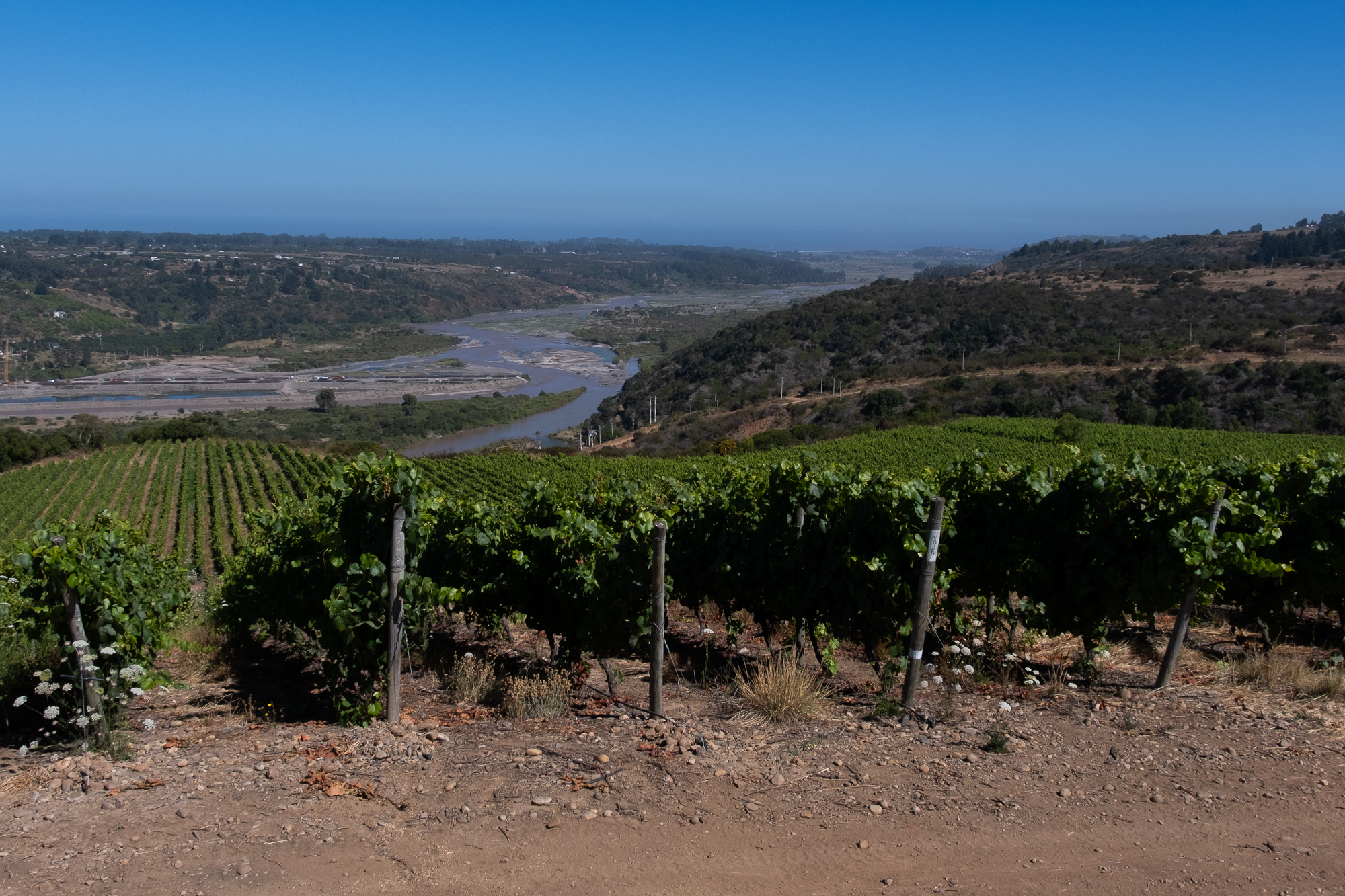After provincial governments directed their Crown liquor distribution corporations to pull U.S.-made alcohol products from shelves earlier this year, many wine (and bourbon) drinkers were left wondering what to drink in their place. Canadian wines certainly enjoyed a surge in sales, at least according to statistics pulled from the Liquor Control Board of Ontario and the B.C. Liquor Distribution Board. But this, I suspect, had more to do with nascent Canadian patriotism than any logical attempt to find suitable alternatives.

If you’re looking for wines with a similar flavour profile to that plush California cabernet, or generously proportioned chardonnay, or dark-fruited pinot noir, you’ll have to search elsewhere.
There are several regions that share a comparable climate, and which are planted to a similar range of grapes. Sicily comes to mind, as does the Languedoc in France. There’s also Stellenbosch in South Africa, and Down Under there’s South Australia and Margaret River.
But the wine-producing country that shares the most in common with California is farther down the same, rather long coast: Chile.
A sliver along the western edge of South America, Chile is in many ways a geographical, geological and topographical mirror image of California. Both share a typically Mediterranean climate with hot, sunny, dry summers, which are pretty much ideal for grape growing. Both are corralled between a major mountain range—the Sierra Nevada in California, the Andes in Chile—and the cold Pacific Ocean. Both have a smaller coastal range of mountains that mitigate the direct effects of the ocean and determine where, and how far, fog can penetrate inland and help moderate the heat. And lastly, both enjoy fertile soils in a central valley where high yields translate to low-cost wines, as well as much more complex mixes of various sediments and assorted volcanics scattered elsewhere on hillsides that favour the production of high-quality, complex wines.
You’ll find equivalents to cool-climate, far-out Sonoma Coast pinot noirs and chardonnays, substantial and savoury Central Coast Rhône-style blends, premium, polished and plush Napa and Sonoma cabernets and merlots, and everything in between. But there is one big difference with their Chilean counterparts, and this is a bonus: value.
The cost of production is much lower in Chile, and the wines, therefore, offer much sharper value, pound for pound. A quick comparison of the cost of living in, say, San Francisco versus Santiago de Chile tells you everything you need to know: No. 13 and No. 160, respectively, on the mercer.com Cost of Living City Ranking 2024.
Whereas the least expensive, drinkable California cabernets start somewhere around $20-$25 in Canada (when you can find them), you can enjoy a Chilean equivalent for under $15. For $50, you’ll get entry-level Napa cabernet, while in Chile you can get into top-tier examples from the Maipo Valley at the same price.
And while California certainly has the edge on the perception of prestige and quality, there’s an increasing number of Chilean wines that sit side-by-side with the best and have proven it in blind comparative tastings held around the world.

Add in the growing diversity of Chile’s offerings—as vintners discover new growing areas high in the Andes, far out on the coast, in the deep south and far north, and rediscover old, dry-farmed vines, experiment with varieties selected to suit to growing and not market conditions, and adopt innovative winemaking techniques—and it’s the perfect time to discover Chile.
Here are seven wines to get you started.
(Note: the Ontario importing agent is listed next to each wine with the Ontario price; check your local sources in other provinces for pricing and availability.)
Miguel Torres Las Mulas Cabernet Sauvignon 2024, Central Valley
$14.95 PHILIPPE DANDURAND WINES LTD.
Cabernet sauvignon is the most planted red grape in Chile, almost as synonymous with the country as it is with California. And Chile owes much to Spaniard Miguel Torres, who first introduced modern techniques like temperature-controlled fermentation in stainless steel tanks in the late 1970s. His range, from entry-level to ultra-premium, is exceptional across the board, and it would be hard to imagine finding a much better cabernet under $15 from anywhere.
Santa Carolina Cabernet Sauvignon Reserva de Familia 2021, Valle del Maipo
$19.95 CHARTON HOBBS INC
A step up, this is an archetype from the country’s most classic wine region for the grape, the way I remember Chilean cabernets to be when they first entered the Canadian market in the late 1980s. It’s made from the oldest cabernet vines on the property and delivers a mix of savoury flavours with cassis fruit, reminiscent of Alexander Valley cabernets.
Concha y Toro Don Melchor 2021, Puente Alto, Maipo Valley
$220.00 ESCALADE WINE & SPIRITS
At the super-premium end, Don Melchor is one of the most compelling rebuttals to the claim that Chile is only good at value, and this 2021 is to my palate the finest vintage since it was first made in 1987. A classic blend composed of 93 per cent cabernet sauvignon, four per cent cabernet franc and three per cent merlot, it’s a magnificent wine, seamless and sophisticated, supremely refined, and will be best from about 2028-2040. Collectors take note.
Viña Leyda Sauvignon Blanc Lot 4 2023, Leyda Valley
$25.95 PHILIPPE DANDURAND WINES LTD.
Viña Leyda was the pioneering company in the cool, coastal Leyda Valley established in the early 2000s, and continues to be a leader, pushing the limits of what this fog-influenced region can produce. This fine example of sauvignon blanc is closer to, say, Sancerre than New Zealand, and much livelier than virtually any unoaked sauvignon from California. Lower-tier Garuma Coastal Vineyards and Reserva Sauvignon Blancs from Viña Leyda are also worth a look.
Santa Rita Floresta Chardonnay 2022, Limarì Valley
$28.00 SELECT WINE MERCHANTS INC.
Chardonnay is the most planted white grape in Chile, and Santa Rita one of the oldest estates, founded in 1880 by Don Domingo Fernández Concha. But the Floresta range is the company’s contemporary take on five classic Chilean varieties planted in the most suitable regions. The northern Limarì Valley was the region chosen for chardonnay, now recognized as one of the best in Chile for the variety (and pinot noir) thanks to the particularly high active calcium carbonate content in the soils (up to 30 per cent), which helps to reduce vigor and concentrate fruit. This has a real Sonoma Coast-like feel.
Emiliana Adobe Pinot Noir 2023 Bío-Bío Valley
$13.00 PMA CANADA LTD.
As the saying goes for pinot noir, you don’t always get what you pay for, but you never get what you don’t pay for. This is one notable exception, a pinot that actually smells and tastes like genuine pinot, at an absurdly low price. How does Emiliana make such high-quality wine for such a low price? It simply defies financial and logistical logic. Don’t expect massive complexity or depth, but pinot lovers will find happiness here.
I can’t think of anywhere in the world that can touch this.
Santa Carolina El Pacto Nº2 Carmenere 2022 Los Lingues
$18.95 CHARTON HOBBS INC
Carmenere is considered by some to be Chile’s flagship red grape; it’s certainly the country with the most plantings. This is a fine example from historic producer Santa Carolina (established in 1875), the fruit of ongoing research projects under the “El Pacto” range. It’s pleasantly herbal with a mix of red and black fruit and modest oak. I like the balance, the typically powdery tannins, the juiciness and drinkability, which should satisfy fans of Californian merlot.
As you look longingly at where the California section used to be, move over an aisle or two to the Chile section. Chances are you’ll find what you’re looking for.
John Szabo is Canada’s first Master Sommelier and one of the best-known Canadian voices in wine. He’s a principal critic for WineAlign.com, where you’ll find all his latest articles, reviews and wine recommendations, and Curator-in-Chief for the WineAlign Exchange, which offers members a curated case of fine wine quarterly. Follow his adventures on Instagram @johnszaboms and Facebook.
Please visit here to see information about our standards of journalistic excellence.

